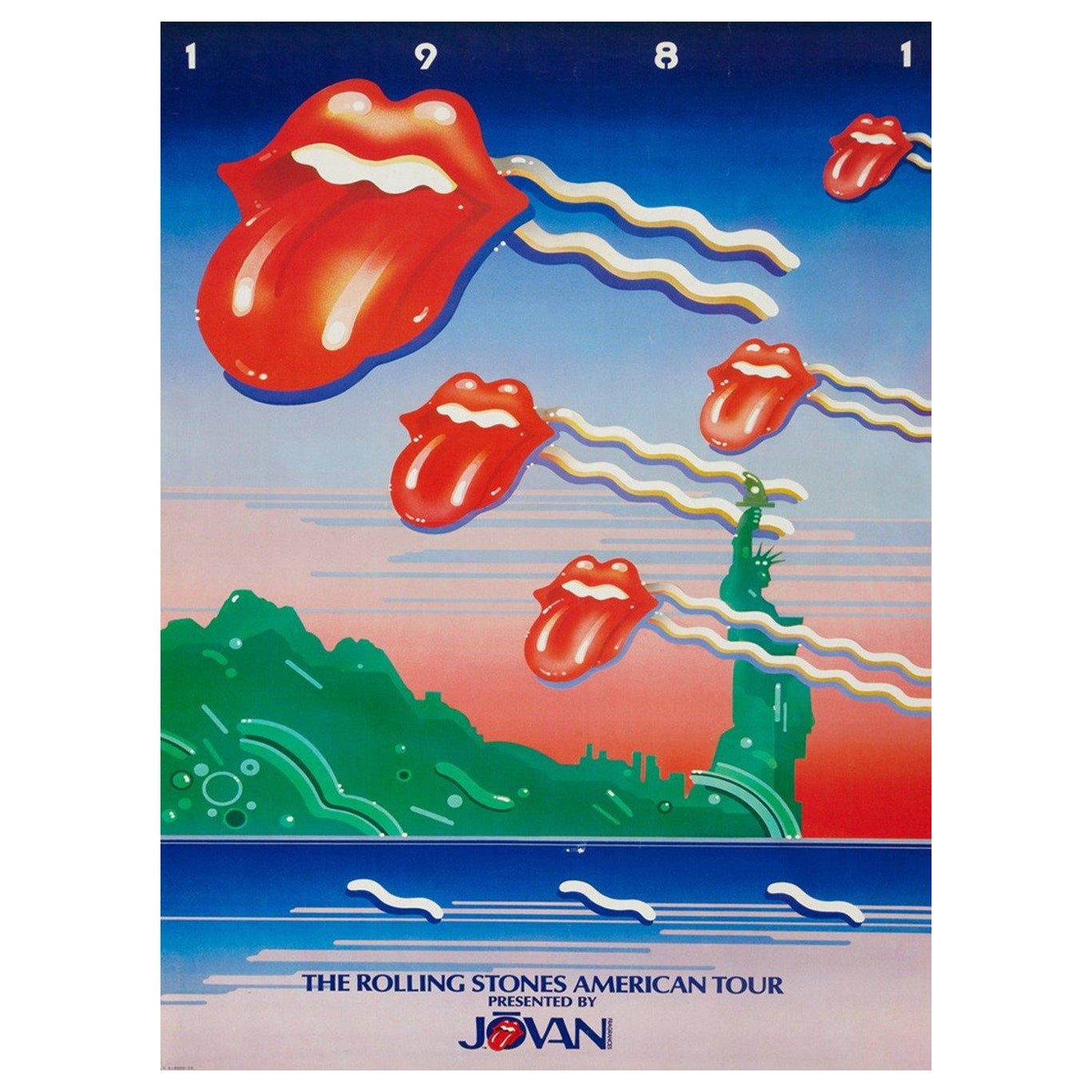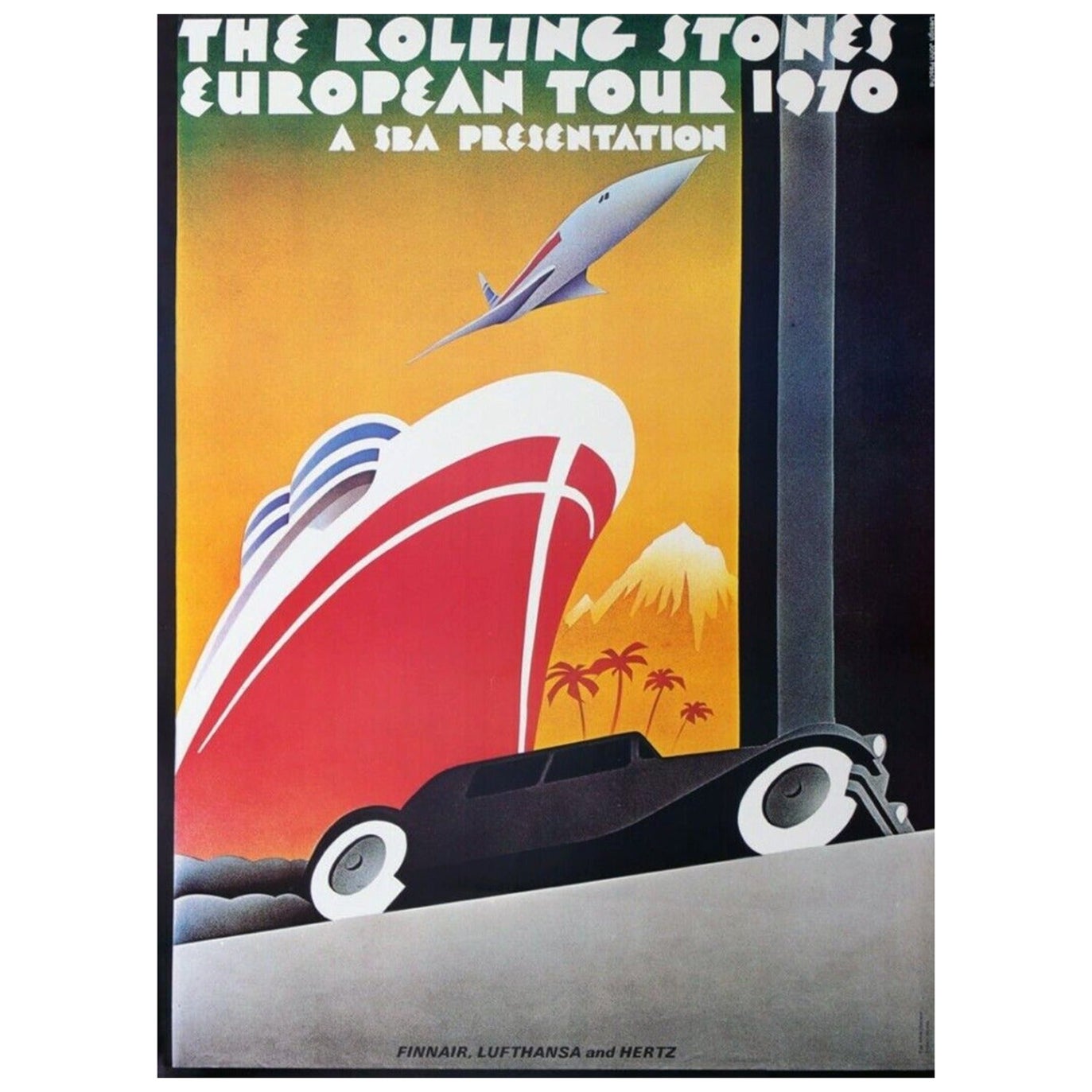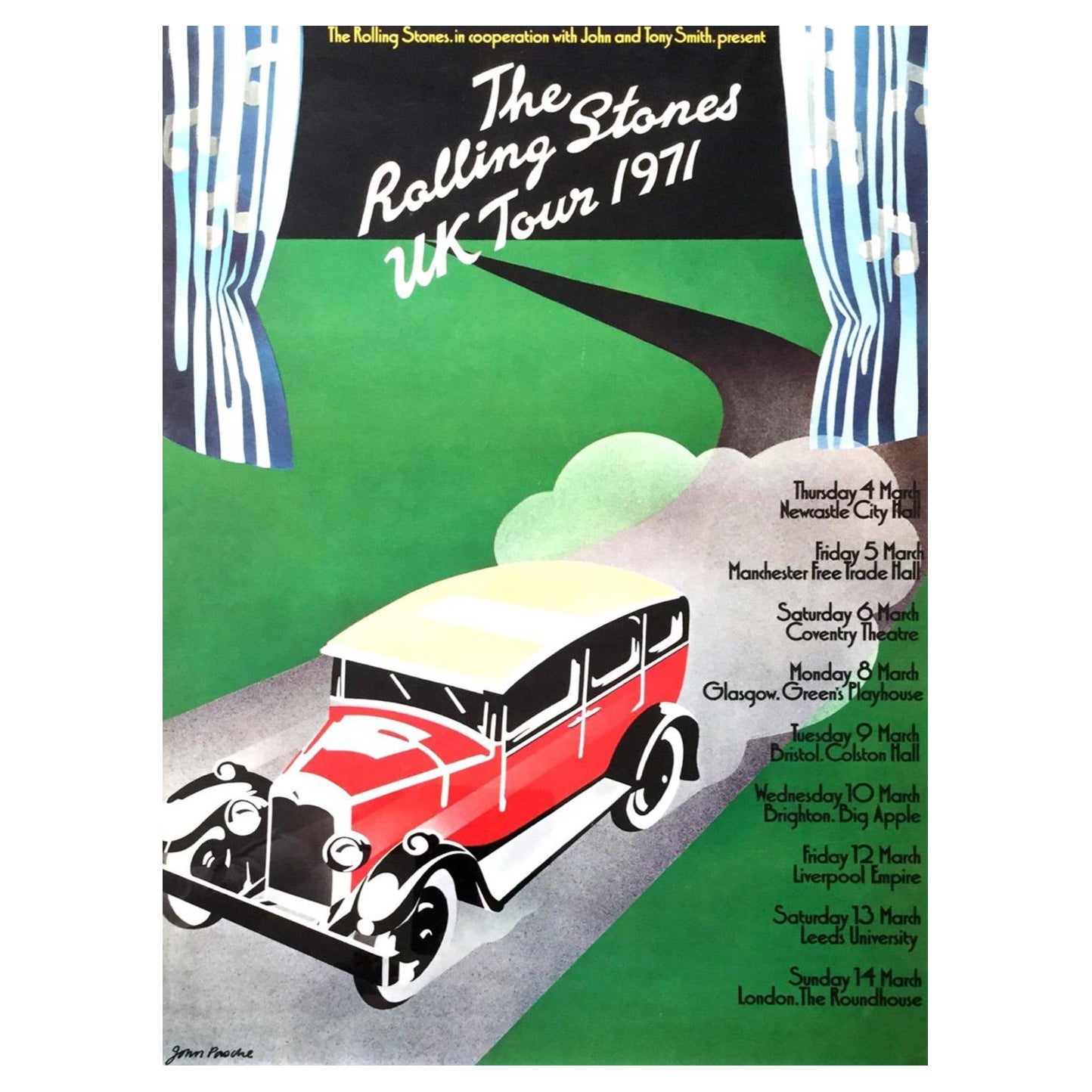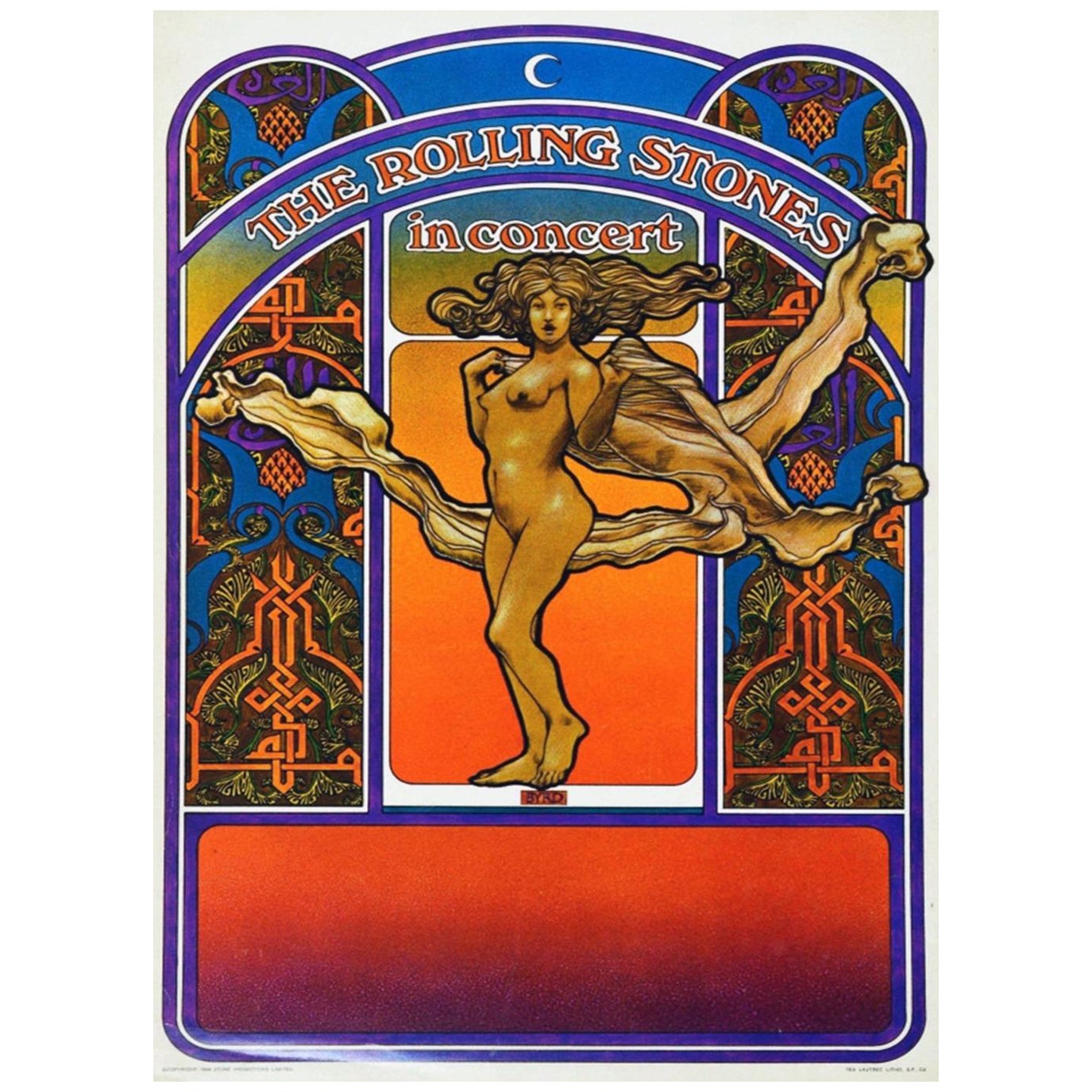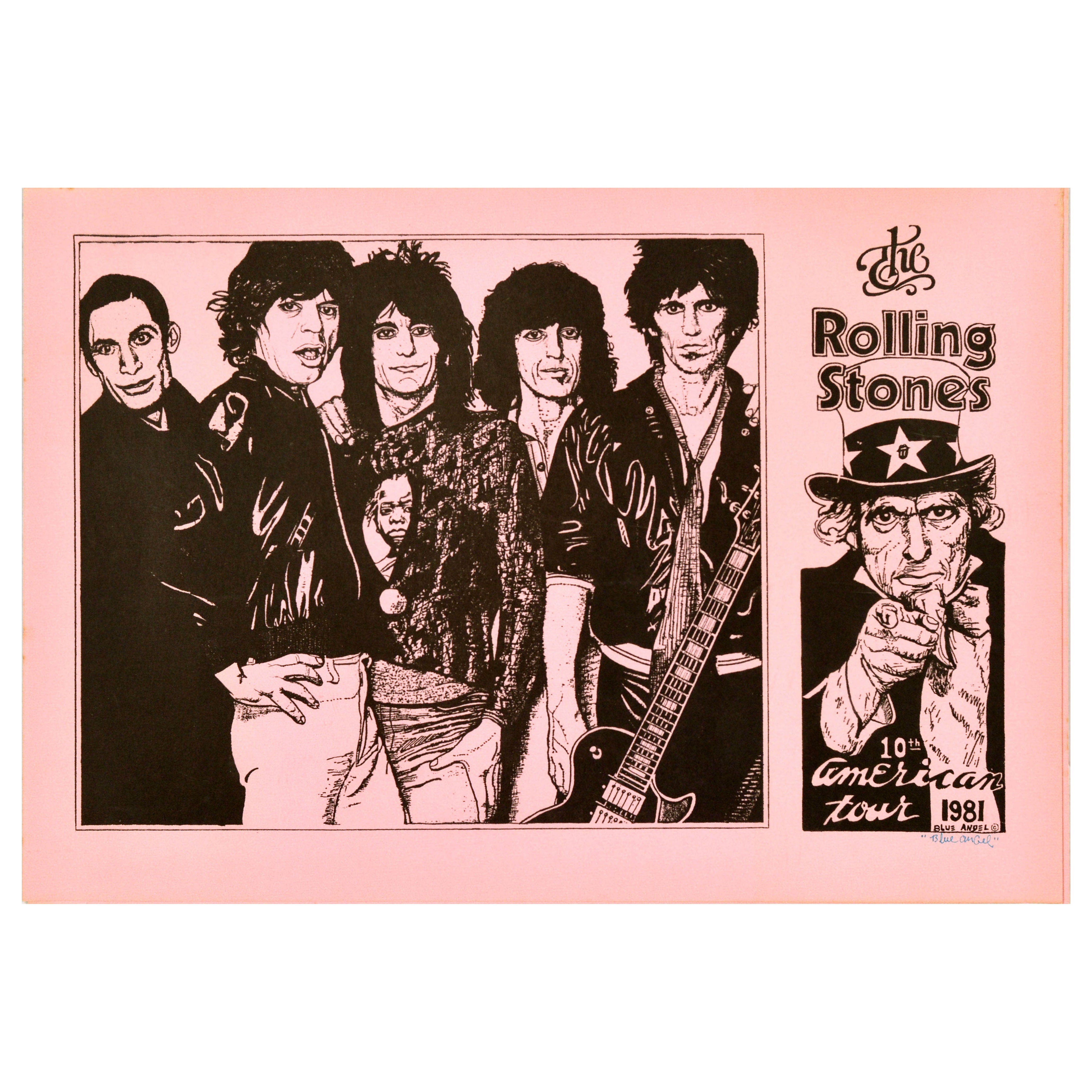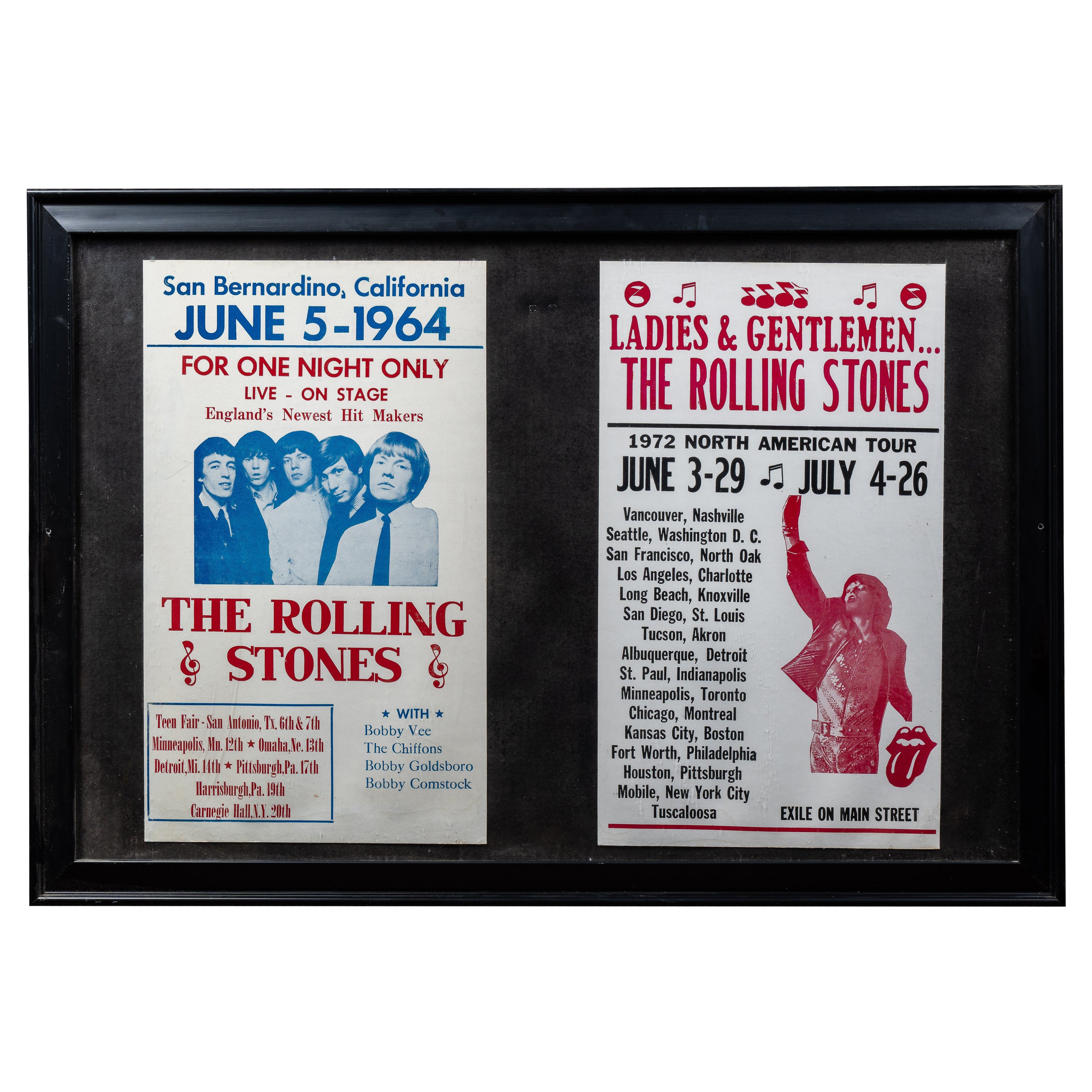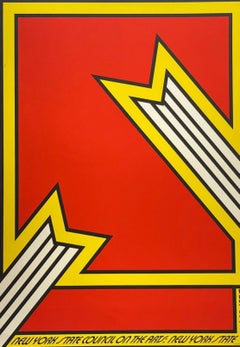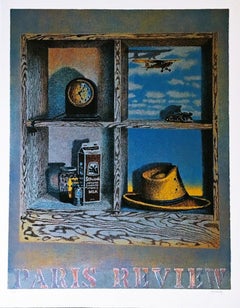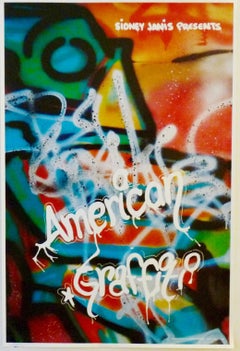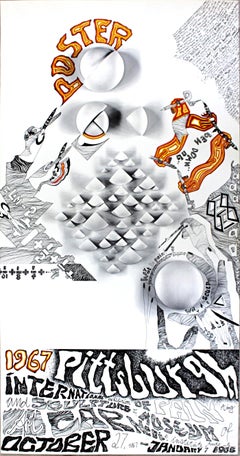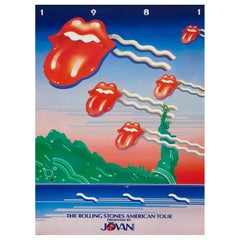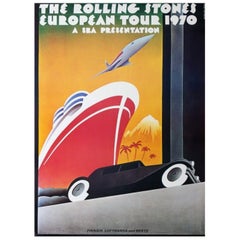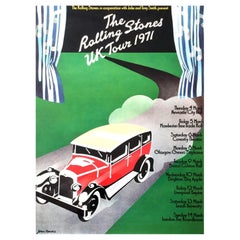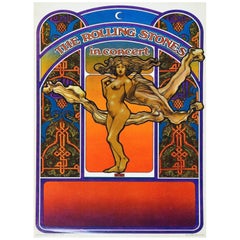Items Similar to Rolling Stones American Tour, rare original 1972 poster designed by John Pasche
Want more images or videos?
Request additional images or videos from the seller
1 of 7
Rolling Stones American Tour, rare original 1972 poster designed by John Pasche1972
1972
$800
£607.95
€699.70
CA$1,144.84
A$1,257.85
CHF 648.67
MX$15,070.34
NOK 8,236.06
SEK 7,729.21
DKK 5,225.78
About the Item
John Pasche
Rolling Stones American Tour, original 1972 poster, 1972
Original vintage offset lithograph poster (this is the original poster, not a reprint
35 1/2 × 25 inches
Unframed
Unsigned, unnumbered and unframed
Illustration by: John Pashe (Pasche)
Production by: Chipmonck
Promotions by: Sunday Promotions, Inc. 1972
Origin: U.S.A.
Date Issued: 1972
- Creation Year:1972
- Dimensions:Height: 35.5 in (90.17 cm)Width: 25 in (63.5 cm)
- Medium:
- Movement & Style:
- After:John Pasche (British)
- Period:
- Condition:Very good condition; a bright, strong impression other than gentle handling around the edges.
- Gallery Location:New York, NY
- Reference Number:1stDibs: LU1745215995912
About the Seller
5.0
Gold Seller
Premium sellers maintaining a 4.3+ rating and 24-hour response times
Established in 2007
1stDibs seller since 2022
457 sales on 1stDibs
Typical response time: 2 hours
- ShippingRetrieving quote...Shipping from: New York, NY
- Return Policy
Authenticity Guarantee
In the unlikely event there’s an issue with an item’s authenticity, contact us within 1 year for a full refund. DetailsMoney-Back Guarantee
If your item is not as described, is damaged in transit, or does not arrive, contact us within 7 days for a full refund. Details24-Hour Cancellation
You have a 24-hour grace period in which to reconsider your purchase, with no questions asked.Vetted Professional Sellers
Our world-class sellers must adhere to strict standards for service and quality, maintaining the integrity of our listings.Price-Match Guarantee
If you find that a seller listed the same item for a lower price elsewhere, we’ll match it.Trusted Global Delivery
Our best-in-class carrier network provides specialized shipping options worldwide, including custom delivery.More From This Seller
View AllVintage 1970 New York State Council on the Arts Award poster Nicholas Krushenick
By Nicholas Krushenick
Located in New York, NY
Nicholas Krushenick
New York State Council on the Arts Award poster, 1970
Silkscreen on wove paper - original 1970 poster, not a reprint
Unsigned, unnumbered, unframed
35 × 25 inches...
Category
1970s Pop Art Abstract Prints
Materials
Screen, Offset
Howard Kanovitz S/N lithograph by famed photorealist artist for The Paris Review
By Howard Kanovitz
Located in New York, NY
Howard Kanovitz
Paris Review, 1968
Lithograph on wove paper
33 × 26 inches
Pencil signed and numbered 9/200
Published by The Paris Review, New Y...
Category
1960s Photorealist Interior Prints
Materials
Lithograph
Rare Sidney Janis Gallery poster for American Graffiti show Abstract Prints
Located in New York, NY
Sidney Janis Gallery, Jean-Michel Basquiat, CRASH (John "Crash" Matos), A1One, Chris DAZE Ellis, Daze, Keith Haring, Rammellzee, TOXIC, Kenny Scharf, Lee Quiñones, Lady Pink, Futura & others
Rare Sidney Janis Gallery poster for American Graffiti show Abstract Prints, 1983
Silkscreen Poster on glossy paper
36 × 24 inches
Unframed
Very rare and highly collectible vintage poster...
Category
1980s Street Art Abstract Prints
Materials
Screen
Rare historic 1960s Lt Ed Fluxus poster Pittsburgh International Carnegie Museum
By Mary Bauermeister
Located in New York, NY
Mary Bauermeister
Pittsburgh International Carnegie Museum, 1967
Offset Lithograph Poster
20 × 37 inches
Edition of 500
Unframed
This is the original, historic poster designed by Mar...
Category
1960s Abstract Abstract Prints
Materials
Offset, Lithograph
Offset Lithograph Poster
By Larry Rivers
Located in New York, NY
Larry Rivers
Offset Lithograph Poster
Offset Lithograph Poster on Wove Paper
Plate signed (Printed Signature)
32 × 30 inches
Unframed
Rare vintage 1970s Larry Rivers offset lithogr...
Category
1970s Pop Art Abstract Prints
Materials
Offset
Rare offset lithograph poster (signed and inscribed to founder, Tallix Foundry)
By Nancy Graves
Located in New York, NY
Nancy Graves
Nancy Graves: A Survey 1969/1980 (Hand signed and inscribed to Dick Polich of Tallix), 1980
Offset lithograph poster (hand signed, dated and inscribed)
signed, dated and...
Category
1980s Abstract Expressionist Abstract Prints
Materials
Offset
You May Also Like
1981 Rolling Stones - American Tour Original Vintage Poster
Located in Winchester, GB
Promoting their 1981 album "Tattoo You", the Rolling Stones American Tour of 1981 was the highest grossing tour of the year, earning over $50 million. Reaching number 1 in the charts and featuring all time classics such as "Start Me Up", "Tattoo You" was a huge success for the Rolling Stones, and is regarded as one of the greatest albums of the 80s.
Featuring the tongue and lips logo created by John Pasche, this beautiful poster features artwork from Doug Johnson...
Category
Vintage 1980s American Posters
Materials
Paper
1970 Rolling Stones - European Tour Original Vintage Poster
By John Pasche
Located in Winchester, GB
The Rolling Stones 1970 European Tour ran from late summer to early autumn 1970 and saw the band playing in support of their latest album, 1969's "...
Category
Vintage 1970s British Posters
Materials
Paper
1971 Rolling Stones, UK Tour Original Vintage Poster
By John Pasche
Located in Winchester, GB
Known as the "Farewell to England" tour, the Rolling Stones 1971 UK Tour took place across 10 days in March 1971 across 9 cities and saw the Stones at their absolute peak. They released the iconic "Sticky Fingers" a few weeks after the tour.
After being commissioned to create the 1970 European Tour poster, and in turn, creating the iconic Stones tongue and lip logo, British designer John Pasche was recruited to create this iconic poster. Featuring an old car driving down the countryside roads...
Category
Vintage 1970s British Posters
Materials
Paper
1969 Rolling Stones in Concert Original Vintage Poster
By David Byrd
Located in Winchester, GB
Wonderful poster for The Rolling Stones' "American Tour 1969". The tour is regarded as one of the greatest of all time and was called by rock critics as "history's first mythic rock ...
Category
Vintage 1960s Posters
Materials
Paper
Original Vintage Music Poster Rolling Stones The American Tour 1981 Blue Angel
Located in London, GB
Original vintage music poster for The Rolling Stones 10th American Tour 1981 featuring an illustration of the smiling band members Mick Jagger, Keith Richards, Ronnie Wood, Bill Wyma...
Category
Vintage 1980s American Posters
Materials
Paper
Pair of Framed Rolling Stones US Tour Posters
Located in Dekalb, IL
Two vintage original The Rolling Stones tour date posters.
These pieces come from two very different times; for both the Rolling Stones and the country. On the left is a 1964 tour p...
Category
Mid-20th Century American Historical Memorabilia
Materials
Paper
More Ways To Browse
Stone Lithograph Poster
Rolling Stones Posters
Rolling Stones Lithographs
Alois Kolb
Amadore Porcella
Andre Renoux
Andrzej Juchniewicz
Andy Warhol Absolut Vodka
Andy Warhol Hitchcock
Antonio Rivera
Art Nouveau Bath
Basquiat Test Pattern
Bearden Bopping At Birdland
Belleau Wood
Ben Shahn Signed Lithographs
Ben Shahn Signed Prints
Benji Asada
Bieres De La Meuse
